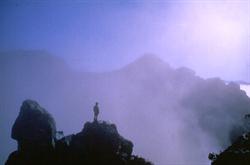Monday, October 5, 2009

Mountainous landscapes of the WHA
The Tasmanian Wilderness World Heritage Area (WHA) is one of the largest conservation reserves in Australia, covering 1.38 million hectares, or about 20% of the island of Tasmania, the southern-most State of Australia. It conserves a diverse array of both natural and cultural features of outstanding global significance. The region provides pristine habitats for a range of plants and animals that are found nowhere else in the world, including many rare and endangered species. For a number of animals which have become extinct on mainland Australia in recent times, the area offers a last refuge.
The WHA is the Australian stronghold of temperate rainforest and alpine vegetation. Its landforms are of immense beauty and reveal a rich and complex geology. Aboriginal occupation extending back beyond 36 000 years, combined with nearly two centuries of European settlement, have created a legacy of humanity's interaction with the wilderness.

The Tasmanian Wilderness World Heritage Area (WHA) is one of the largest conservation reserves in Australia, covering 1.38 million hectares, or about 20% of the island of Tasmania, the southern-most State of Australia. It conserves a diverse array of both natural and cultural features of outstanding global significance. The region provides pristine habitats for a range of plants and animals that are found nowhere else in the world, including many rare and endangered species. For a number of animals which have become extinct on mainland Australia in recent times, the area offers a last refuge.
The WHA is the Australian stronghold of temperate rainforest and alpine vegetation. Its landforms are of immense beauty and reveal a rich and complex geology. Aboriginal occupation extending back beyond 36 000 years, combined with nearly two centuries of European settlement, have created a legacy of humanity's interaction with the wilderness.
Labels: India Tourism







0 Comments:
Post a Comment
<< Home